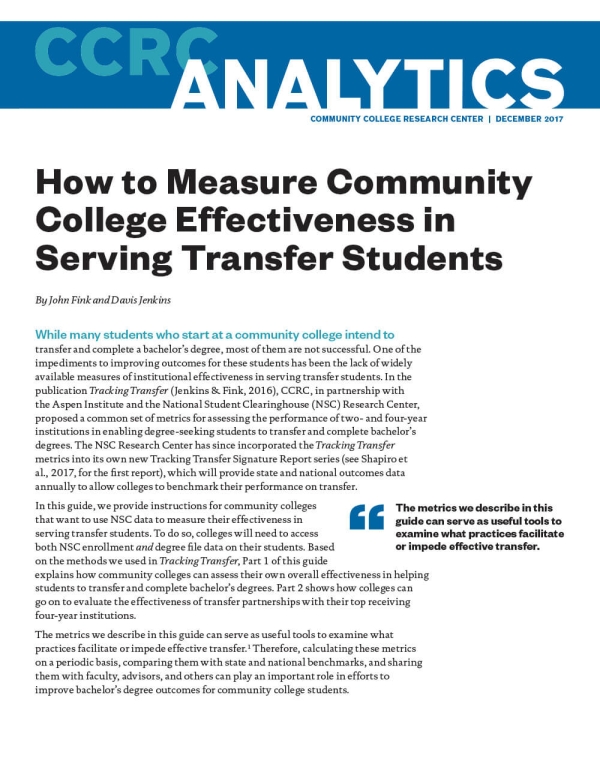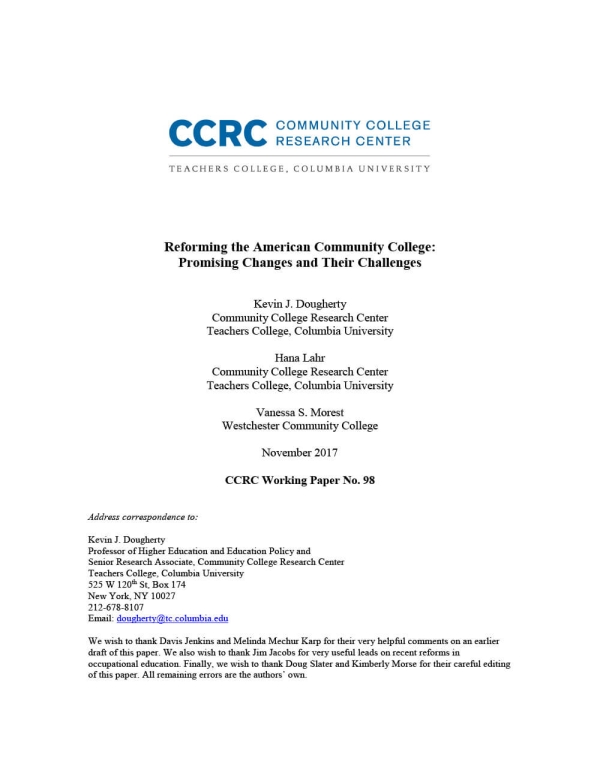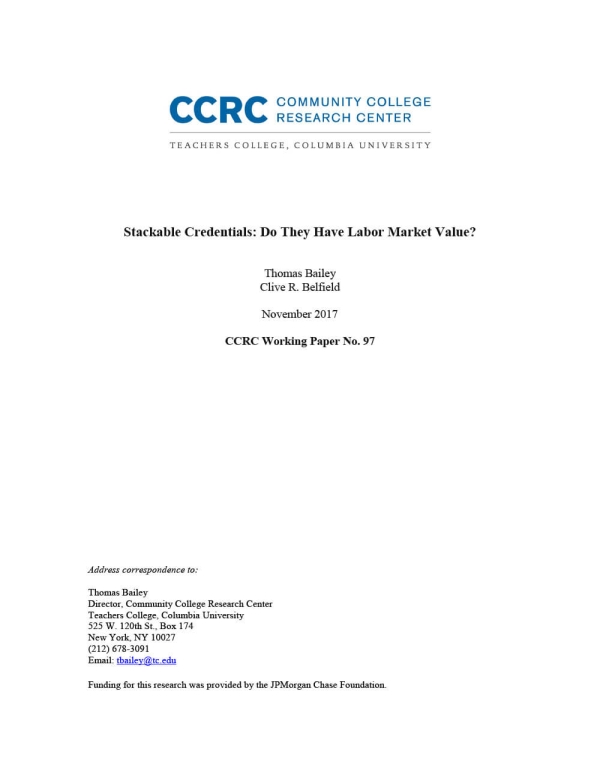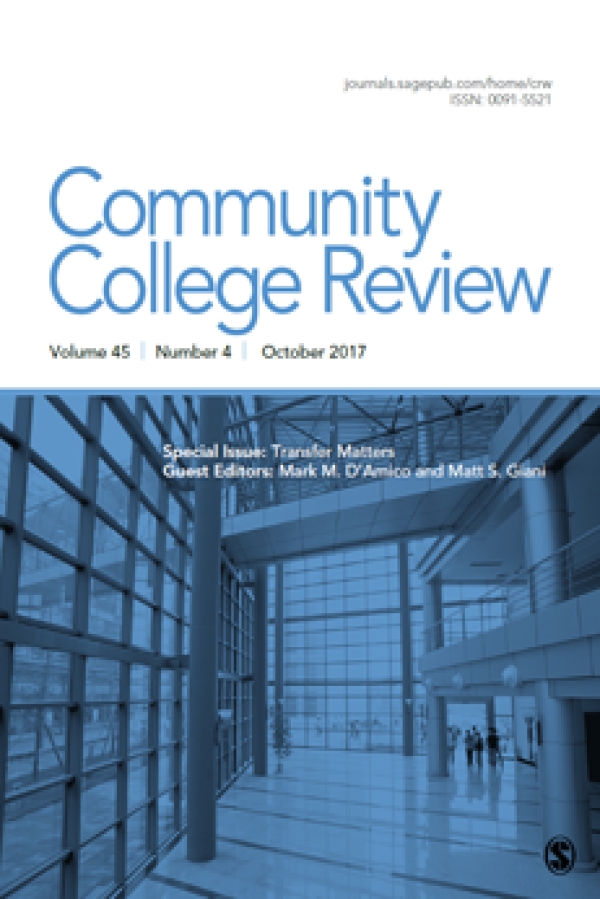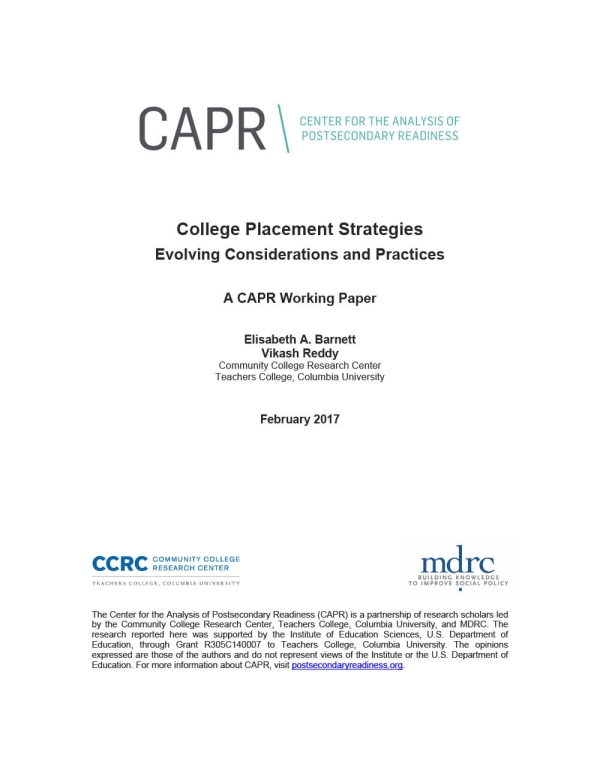December 2017
This guide provides instructions for community colleges that want to use National Student Clearinghouse data to assess their own effectiveness and that of particular transfer partnerships in helping students to transfer and complete bachelor’s degrees.

